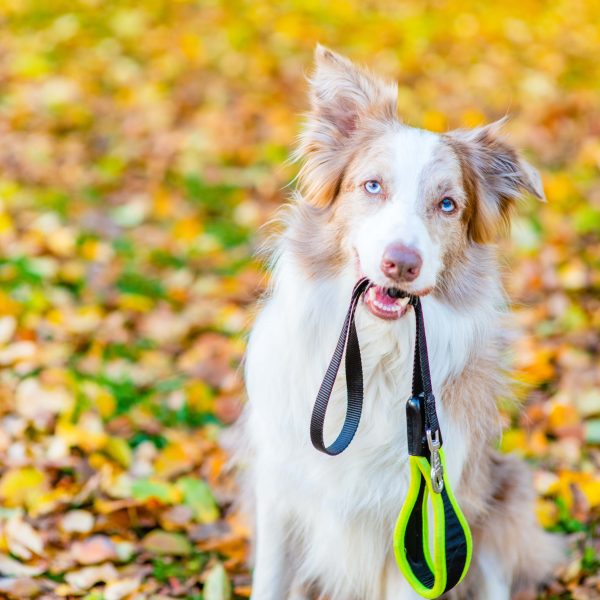How to Prepare Your Dog For a Dog Walker

Dog walkers provide an important service. Dogs require exercise and if you have a job with long hours, it might be hard to find time to walk your dog. Dog walkers can get your dog out for exercise, which provides good physical and mental stimulation. However, there are some things to do before hiring someone to walk your dog. Here’s how to prepare your dog for a dog walker:
1. Make Sure Your Dog is Socialized
Asking a stranger to walk your dog might stress your dog out a little. To make sure your dog is comfortable around new people, try and assess their socialization level. If you enrolled your dog in any type of obedience training, your dog probably has been socialized appropriately. This is one of the biggest benefits of puppy training classes.
If you haven’t had your dog get any type of dog training classes, think about how they react to visitors coming into your home. If they’re excited to meet new people and are comfortable around them, that’s a good sign. If they tend to hide or show signs of aggression, they need more time to be socialized.
You should also gauge how they react in public. Take them on a walk where you may encounter people. Pay close attention to your dog’s body language when they notice another person or dog. If their body language is open and calm, your dog is probably comfortable around new people and dogs.
If they seem stressed or anxious, you probably need to work on some basic training and socialization tactics. You can also try obedience classes. If your dog is nervous around other people, you can work on obedience training at home, and as their confidence builds, enroll them in a class with other dogs and people. These are some tips to help your shy dog interact with other dogs and people and are great ways to help your dog become a better-socialized member of society.
2. Work on Training
Any dog walker will appreciate a well-trained dog. So, even if your dog seems well-trained, you should brush up on basic training skills. Make sure your dog has a strong grasp on basic commands that every dog should know, such as stay and sit.
You should also make sure your dog is trained to walk on a leash. When leash training your puppy, it’s best to begin early. Also, make sure to use cues and be patient and consistent. Even if you didn’t begin training when your dog was a puppy, a dog is never too old to learn how to walk with a leash.
3. Invest in the Right Walking Gear
Having the right walking gear is important to keep your dog and the dog walker safe and is a useful dog walking tip. Some things to invest in include a proper leash, collar, dog water bottle, and poop bags. You might also want to consider training treats. Training treats can help reinforce positive behavior.
You may also want to consider a dog harness instead of a dog collar. Harnesses can ensure a safer walking experience and are especially helpful if your dog tends to pull a lot. Make sure to use the gear a few times before your dog walks with the dog walker. This way, you can make adjustments as needed. Make sure everything fits properly and isn’t poking or restricting your dog in any way.
4. Interview a Few Dog Walkers
It might take you a little bit to find the right fit for your dog. There are many apps and websites available to help connect you to a dog walker. You can also ask friends and family members who use a dog walking service for tips or recommendations. Your veterinarian also might have some resources available as well.
Pick a few candidates and set up interviews or meet and greets with each one. Ask about their qualifications, experiences with dog walking, and training style. Make sure to inquire about insurance in the case of an injury. You should discuss the length of walks and what kind of schedule you’re looking for.
Make sure you have a backup plan in case the dog walker needs to cancel. This could either be another dog walker that your dog is comfortable with or a family member or friend who knows your dog well. You may even be able to have a good doggy daycare as a backup. This is one of the benefits of doggy daycare. Also, be sure to discuss pricing so there are no surprises down the road.
5. Introduce Your Dog
Of course, your dog needs to feel comfortable with any potential dog walker. Once you’ve narrowed down your choices to two or three candidates, you should introduce your dog. Take note of your dog’s body language and how the dog walker reacts to your dog. They often say dogs are excellent judges of character, so if your dog seems comfortable and happy, they’re probably a great pick!
This is just an overview of how to prepare your dog for a dog walker. Exercise is important for all dogs, especially since it gets them out of their house and provides mental stimulation. Plus, a dog walker helps your dog become more comfortable interacting with different people and places, which means your dog becomes better socialized! This is also one of the costs of owning a dog to keep in mind as you think about adding a dog to your family.
